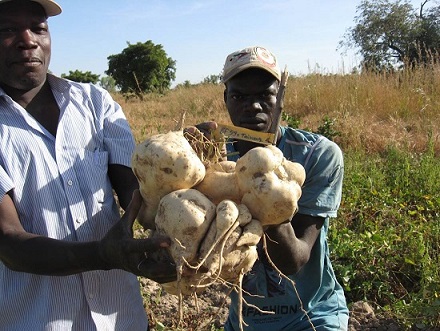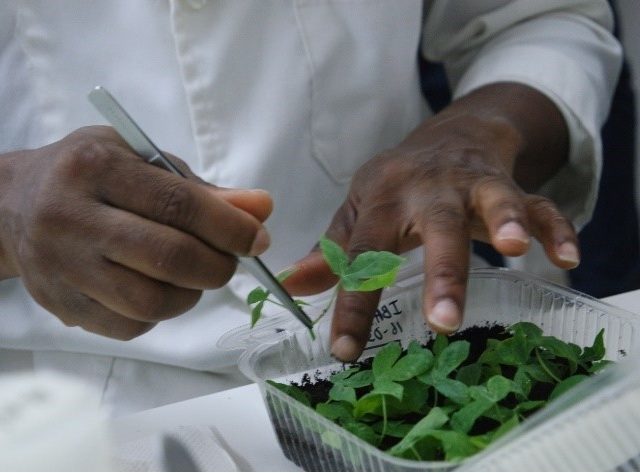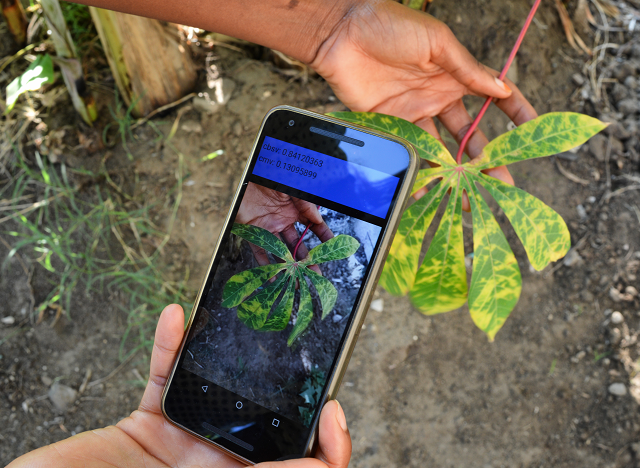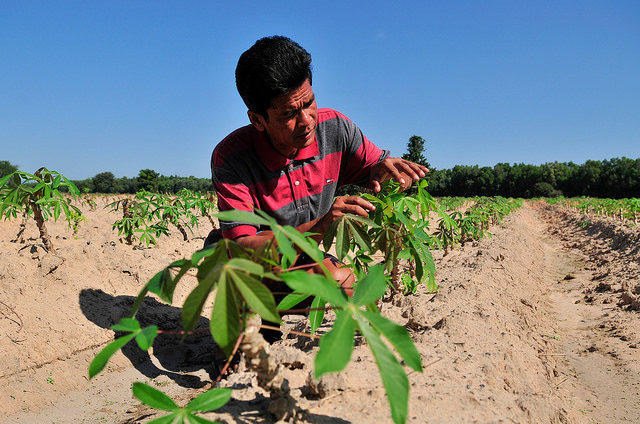Koussao Some is a sweetpotato breeder at the Institute of Environment and Agricultural Research (INERA) in Burkina Faso. He did his PhD at the West African Centre for Crop Improvement (WACCI) at the University of Ghana, Legon, with the support of AGRA. He also received a grant from AGRA for his breeding work. He was one of several researchers who received grants from RTB to participate in the 9th Conference of the African Potato Association, in Naivasha, Kenya, where we met and conducted the following interview. At the last APA conference, he was elected the Association representative for West Africa. He is passionate about crop improvement and nutrition.
What kind of work have you been doing these last few years?
I am working on improving sweetpotato varieties for higher yield and beta-carotene (the precursor of vitamin A) content. With the INERA team, we’ve crossed local varieties, which are mostly white or yellow-fleshed, with imported orange-fleshed varieties that are much richer in vitamin A. We worked with farmers during the selection process. Things are going much faster than we expected. In two years, we’ve selected 12 high-yielding varieties out of the 33 varieties that we bred. We hope to attain homologation in the next two years.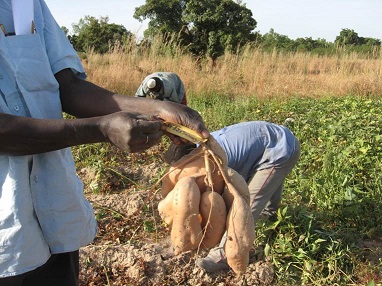
How popular is the sweetpotato in Burkina Faso?
The sweetpotato has become increasingly popular in the country over the past decade. Production on a national scale expanded from 27,000 tons in 2001 to 141,000 tons in 2011, more than a five-fold increase. Farmers realized they could produce a lot in a small area without degrading the soil, and earn a good income. The sweetpotato practically promoted itself! Sweetpotatoes can be grown in relatively poor soils. This probably explains much of the growing disaffection with yams, which require the clearing of new land and aren’t as easy to grow. Keep in mind that we have significant population growth, which means more demand and less land available. But the most important thing is that Burkinabes like sweetpotatoes, which they simply call “patates”. They love to eat them boiled or fried. In the late afternoon, it is common to see women selling sweetpotato fries by the roadside. And it is worth mentioning that in Burkina Faso, even if men grow sweetpotatoes, once they are harvested, they become a women’s business. It’s the women who process and sell them. The farmers know this – they only sell to women!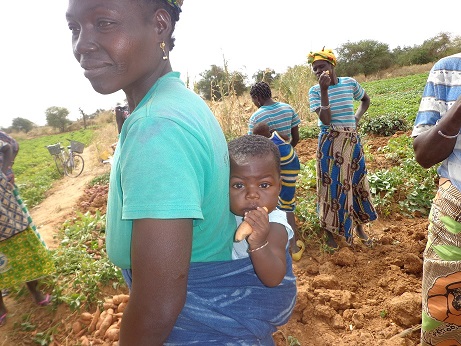
What is the trend for sweetpotato consumption, especially the orange-fleshed varieties?
We should try to diversify consumption patterns, for example by converting sweetpotatoes into flour, which makes transportation and storage easier. As for the orange-fleshed sweetpotatoes, children love their sweet taste and color. When mixed with milk, they become a very nutritious meal. They may be a little sweet for many adult consumers’ taste, but it might just be a question of finding new recipes.
We are fortunate to have the support of the SASHA project, which allows us to collaborate with other experts, to participate in meetings with farmers or consumers, and to advance in our research for the introduction of new orange-fleshed sweetpotato varieties. Our Department of Food Technology focuses on issues related to taste, nutrition and consumer preferences. We also rely on the International Potato Center (CIP) to help us through its nutritional quality laboratory, based in Kumasi, Ghana, which has Infrared Spectrum Photometry technology. We send them samples and they send back the results. CIP also helped us with the renovation of the greenhouse at our INERA-Kamboinse research station, near Ouagadougou, and CIP’s virology helps our virologist at the Kamboinse station.
Working with RTB is opening new opportunities. It is important to find new partners!
Text by Véronique Durroux-Malpartida, photos by Koussao Some
